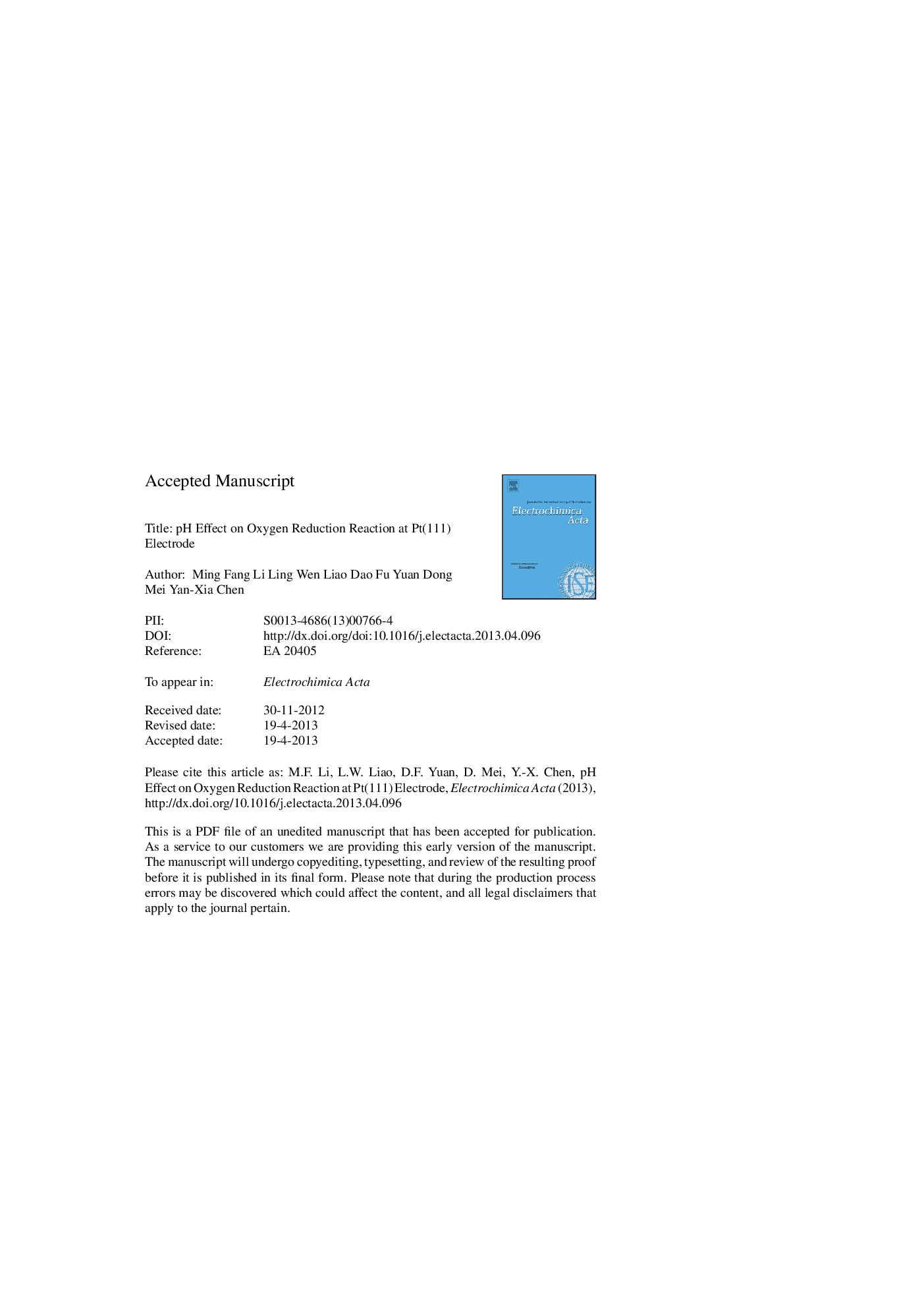| Article ID | Journal | Published Year | Pages | File Type |
|---|---|---|---|---|
| 6615900 | Electrochimica Acta | 2013 | 36 Pages |
Abstract
pH effect on oxygen reduction reaction (ORR) at Pt(1 1 1) electrode has been investigated in 0.1 M HClO4, 0.1 M NaOH, 0.5 M NaClO4 + x mM HClO4 (x = 0.1-35 mM) and 0.5 M NaClO4 + y mM NaOH (y = 2-20 mM) solutions using hanging meniscus rotating disk electrode system (HMRDE). We found that (i) during ORR in solutions with 2.5 < pH â¤Â 4 and low buffer capability, when the mass transport for H3O+ is not fast enough to maintain O2 + 4H+ + 4eâ â 2H2O (reaction (1)), O2 + 2H2O + 4eâ â 4OHâ (reaction (2)) will set in, which is accompanied with sensitive change of the pH at electrode/electrolyte interface (pHs); (ii) at the same overpotential, ORR current density (jORR) is approximately the same for both reactions (1), (2) in all solutions irrespective of pHs; (iii) the kinetic and kinetic-mass transport mixed-control regions for ORR locate in the same potential region for OHad + H+ + eâ â H2O or OHad + eâ â OHâ in O2 free solution, both ORR and OHad adsorption/desorption display similar pH independence; (iv) During ORR, OHad adsorption/desorption occurs fast in both the forward and backward direction in parallel with ORR. The results reveal that the high activation overpotential and the slow kinetics for ORR at Pt(1 1 1) are limited by the thermo-electrochemistry of OHad adsorption/desorption.
Related Topics
Physical Sciences and Engineering
Chemical Engineering
Chemical Engineering (General)
Authors
Ming Fang Li, Ling Wen Liao, Dao Fu Yuan, Dong Mei, Yan-Xia Chen,
